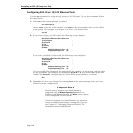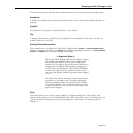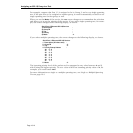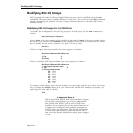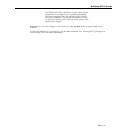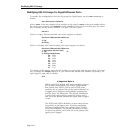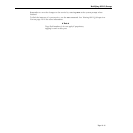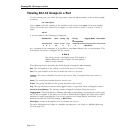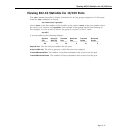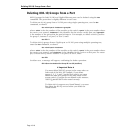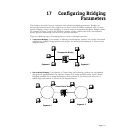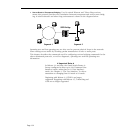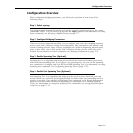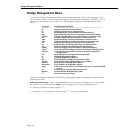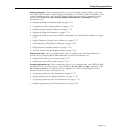
Viewing 802.1Q Groups in a Port
Page 16-16
Viewing 802.1Q Groups in a Port
To view which ports use which 802.1Q groups, enter the vas command at the system prompt,
as shown:
vas <slot>/<port>
where <slot> is the slot number of the module on the switch and <port> is the port number
where the service was created. For example, to view an 802.1Q service on port 5 of slot 2,
enter:
vas 2/5
A screen similar to the following is displayed:
Slot/Port/Inst Vport Group Tag Priority Tagging Mode Description
or
PriorityRemap
============ ===== ===== ==== ============= ============= ==========
2 5 1 33 2 2 4 Mult STree
As a variation of this command, it is possible to enter vas without a slot or port number. This
will display all services configured for the switch.
♦ Note ♦
The above screen is for Gigabit ports. The display is
slightly different for 10/100 ports. See descriptions
below for more details.
The following section describes the fields displayed using the
vas command.
Slot. The slot number of the switch on which the service is located.
Port. The port number of the slot on which the service is located.
Instance. The service identifier for the 802.1Q service. This is assigned when the service is
created.
Vport. The virtual port number that the service uses.
Group. The group identifier for the group attached to this service.
Tag. The tag information entered into tagged frames, as specified when creating the service.
Priority or PriorityRemap. The priority number assigned to packets from this service.
Tagging Mode. This field displays different information depending on whether the switch ports
are 10/100 or Gigabit. If the ports are 10/100 or Kodiak-based Gigabit, this field shows either
multiple or single spanning tree. For
802.1Q support over OmniChannel on Kodiak 10/100
Ethernet boards, this field will display as
Mult S Tree.
Description. A textual description used to identify the service.
For more information on single vs. multiple spanning tree, see Single vs. Multiple Spanning
Tree on page 16-4.



